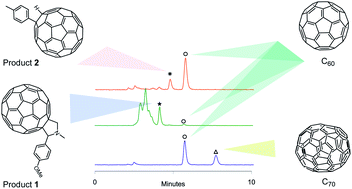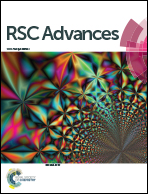Analytical and preparative separation and isolation of functionalized fullerenes by conventional HPLC stationary phases: method development and column screening†
Abstract
Isolation and purification of functionalized fullerenes from often complex reaction mixtures is challenging due to the hydrophobic nature and low solubility in regular organic solvents. We have developed an HPLC method that efficiently, employing regular reversed phase stationary phases, separates not only C60 from C70 in a model mixture, but also C60 monoadducts from polyadducts and unreacted C60 from fulleropyrrolidine and hydroarylation example reaction mixtures. Six HPLC columns with regular reversed phase stationary phases were evaluated using varying proportions of acetonitrile in toluene as eluent; with C18 and C12 stationary phases with high surface area (450–400 m2 g−1) being the most efficient regarding separation efficiency and analysis time for all mixtures. The analytical method is effectively transferrable to a preparative scale to isolate the monoaddition products from complex fullerene reaction mixtures.



 Please wait while we load your content...
Please wait while we load your content...